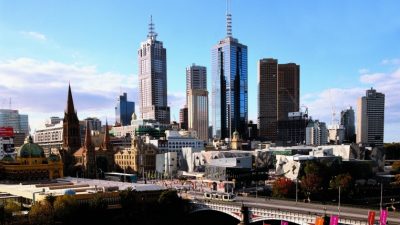The Myth of the Liveable City

In 2016, the Melbourne-based Herald Sun claimed with some consternation that Melbourne was “set to lose its status as the world’s most liveable city.” That particular, somewhat meaningless status is granted by that great myth maker, the Economist Intelligence Unit, whose Global Liveability Index tends to deceive rather than illuminate. Not that the Herald needed to worry: Melbourne has retained its mantle, and the propagandists are crowing.
The EIU is far from the only player in this game. Mercer Human Resource Consulting has its own Quality of Living Survey, and titled for Vienna as the place to be in its 18th study last year, giving Baghdad the dirtied wooden spoon.[1]
Yet each year, the party balloons are procured with zombie-like predictability for the victors, a fairly unchanging set at the top featuring Melbourne and Vancouver. That’s provided you follow The Economist the way a follower charges after a sadhu.
This is an exam that has been marked in advance, a decision suitably gamed, Melbourne, this grand sized expensive village, which keeps getting top billing. Not even the Herald Sun, as pointed out by Crikey, was necessarily going to go into much detail as to why Melbourne might risk losing that crown.[2]
The ultimate point here is not whether Melbourne has a left-bank culture to swoon over, or a stunning social scene that will enable punters to trip the light fantastic. The EIU rating system is far more prosaic in purpose, a sort of philistine’s guide book for the corporate traveller and big business.
The point is made by Alan Davies of The Urbanist:
“these expatriates are mostly well-paid corporate executives who are far more likely to live in mansions or penthouses than ‘dogbox’ apartments.”[3]
The suburb will be “up-market”; the drive to work will be luxuriant and distinctly averse to public transport; and health care will be covered, not by the public insurer but a private concern sponsored by the company.
The same goes for the Mercer studies, though the slant there is distinctly towards the European continent. These comb the health, education, housing and economic conditions less from the perspective of the trudging main street citizen than the Wall Street flier who may have to be relocated. Whether a city such as Vienna, long famous for its social housing, gets the nod is less significant than the heft it can muster for employees who relocate.
A neat contrast to the EIU finding for top banana was that Mercer were not taken by the fuss around Melbourne, placing it at a more slumming 15 in the rankings and, horror of horrors, behind Sydney. (A superficial comparison in terms of rentals and living cost give that rating a semblance of plausibility.) Between the EIU and Mercer views lie clear differences of opinion for German speaking cities, with the latter proving most amenable to the Teutonic tongue.
The preponderance of Australian and Canadian cities in the Intelligence Unit’s rankings did prompt a quip from the New York Times:
“The Economist clearly equates liveability with speaking English.”[4]
The call of those British dominions remains strong for those in the EIU. As the column went on to note,
“Health care and education are important, of course, but, except in the choice of Vienna, neither Mercer nor The Economist seem to have put much emphasis on high culture.”
The boom cities, the exciting, hot pot centres (New York, London or Paris) stocked with treasures (more accurately termed loot) of empires, capital and cosmopolitan cultural sets get shoved down the lists for being, unsurprisingly, places of higher crime, crowding and creaking infrastructure. Flushed excitement matters less in these surveys than sober business deals.
Yet a city like Melbourne would be, to anybody mildly acquainted with it, an odd winner in any case, even by some of the criteria these fluff studies insist on using. It certainly riles Brent Toderian, Vancouver’s chief city planner from 2005 to 2012. Those were the days when his city gazed over others in the list.
Toderian, in classic deflating mode, notes that Melbourne has an “outstanding downtown” but fails pretty miserably in the suburbs, which he deems “ordinary or below-average”.[5] In what would surprise some Melbournians, he pours cold water on praise for the “largest tram network in the world”, noting insufficient “land use and density around the trams” to encourage more use. The car, in short, remains king in the suburbs.
Alternative systems of assessing a city’s liveability merit have little room for the likes of Melbourne or Vancouver. Hong Kong, for instance, topped a study by urban planner and architect Filippo Lovato, whose submitted plan won the EIU’s own effort to come up with a new approach to evaluating liveability.[6]
“Hong Kong, the winner,” went the confident Lovato, “is a very compact city that has managed to maintain its natural heritage, create a dense network of green spaces and enjoy extensive links to the rest of the world.”
Alien references to any Melbourne of Vancouver resident.
It also followed in Lovato’s study that the Australians and Canadians featured less, and, in true civilizational bliss, European cities romped in. Amsterdam, Berlin and Munich made top ten appearances. But such a model was not, ultimately, embraced by the compilers of the EIU index, who remain stuck to the Melbourne-Vancouver nexus. All ascendant corporate logic promises to prevail, while embracing, in large measure, the hoodwinking philistinism that comes with it.
Dr. Binoy Kampmark was a Commonwealth Scholar at Selwyn College, Cambridge. He lectures at RMIT University, Melbourne. Email: [email protected]
Notes
[1] https://www.theguardian.com/business/2016/feb/23/vienna-named-worlds-top-city-for-quality-of-life
[6] http://travel.cnn.com/explorations/life/latest-most-livable-city-shocks-485380/
Featured image is from Tourism Australia.

